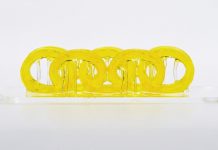
Researchers at the University of Bristol have achieved a major breakthrough in quantum technology by developing the world’s smallest quantum light detector on a silicon chip.
This tiny detector, smaller than a human hair, marks a significant step towards advancing quantum technologies that use light.
work is detailed in the paper “A Bi-CMOS electronic photonic integrated circuit quantum light detector,” published in Science Advances.
The miniaturization of transistors onto affordable micro-chips in the 1960s was a key milestone in the information age. Similarly, integrating this tiny quantum light detector onto a silicon chip could be crucial for the future of quantum technology.
High-performance electronics and photonics are essential for the next generation of advanced information technologies. Researchers and companies worldwide are working on ways to create quantum technologies using existing commercial manufacturing processes.
This new quantum light detector from the University of Bristol could play a vital role in making high-performance quantum hardware on a large scale, which is essential for building quantum computers that require many components.
The Bristol team’s quantum light detector is extremely small, measuring just 80 micrometers by 220 micrometers. Its tiny size allows for very fast operation, which is important for high-speed quantum communications and optical quantum computers.
Using established and commercially available fabrication techniques increases the chances of incorporating this technology into other areas like sensing and communications.
Professor Jonathan Matthews, who led the research and is Director of the Quantum Engineering Technology Labs, explains, “These types of detectors, called homodyne detectors, are used in many quantum optics applications. They work at room temperature and can be used for quantum communications, highly sensitive sensors like those in gravitational wave detectors, and even in designs for quantum computers.”
In 2021, the Bristol team showed that linking a photonics chip with a separate electronics chip could increase the speed of quantum light detectors. Now, with a single electronic-photonic integrated chip, they have increased the speed by ten times and reduced the footprint by fifty times.
Besides being fast and small, these detectors are also highly sensitive. Dr. Giacomo Ferranti, one of the authors, explains, “The key to measuring quantum light is sensitivity to quantum noise. Quantum mechanics causes a small, fundamental level of noise in all optical systems.
This noise reveals information about the quantum light in the system, determines how sensitive an optical sensor can be, and helps mathematically reconstruct quantum states. It was important to show that making the detector smaller and faster did not affect its sensitivity.”
The researchers note that there is still more work to do in integrating other quantum technology hardware at the chip scale. They need to improve the detector’s efficiency and test it in various applications.
Professor Matthews added, “We built the detector using a commercially accessible foundry to make its applications more accessible. While we are excited about its potential across different quantum technologies, it is crucial that we continue to address the challenge of scalable fabrication.
Without truly scalable quantum hardware fabrication, the impact and benefits of quantum technology will be delayed and limited.”
This groundbreaking development brings us closer to a future where quantum technology can revolutionize various fields, from computing to communications and beyond.
Source: University of Bristol.



